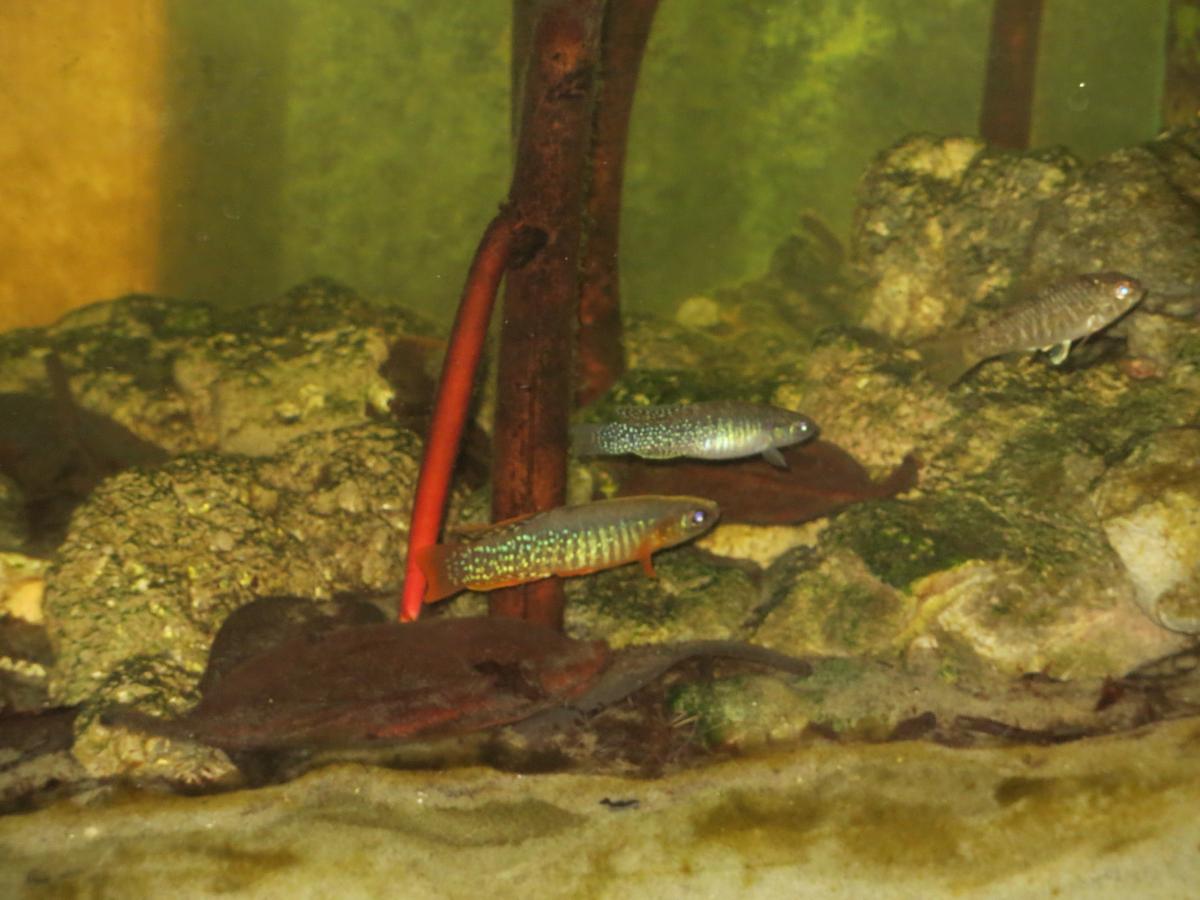I'm new to this forum, but I found you guys while doing some research, so I'm hoping you can help me out. A year ago while my family was on vacation in Fort Myers Beach, Florida, I was dip netting in a brackish mangrove slough behind our condo when a different fish caught my eye in a netful of worthless Gambusia. I brought the fish home and after many laborious hours of googling, I determined it to be a Fundulus confluentus. I was absolutely smitten with him, and so when we returned this past summer, I wanted to find him a buddy. After days, I finally caught one, but I was surprised to find that his fins were not the same color as my original little guy. And therein lies the problem. You can see from the photo that the larger killifish has nearly identical markings to the younger one, but his fins are a bright orange. It's not because he's older or been fed flake food, because when I caught him a year ago, he was the same size as the newcomer and his fins were the same color they are now. I'm also fairly certain they're both males, so it's not sexual dimorphism. Is this just an example of variation within a species? Could he be a hybrid with another Fundulus? Or do I just have two different species? Has anyone else seen this fin coloration before? I'd actually be interested in procuring more individuals like him if someone knows of any. Also, if my ID is wrong, I'd appreciate a second opinion.
I'm amazed I caught these two guys in the first place. Even though I was intentionally trying to catch one the second time, after a week I had only caught the one. I don't think dip netting was the best technique to use for these guys since there were so many mosquitofish in the midst. If anyone has a better suggestion of how to catch more killifish, I'd be welcome to hear it. I don't want take too many from this one area, of course, though.
Thanks a million,
BROM
P.S. Ignore the Cyprinodon variegates trying to photo bomb in the picture.
Edited by Brom, 12 December 2013 - 10:19 PM.








